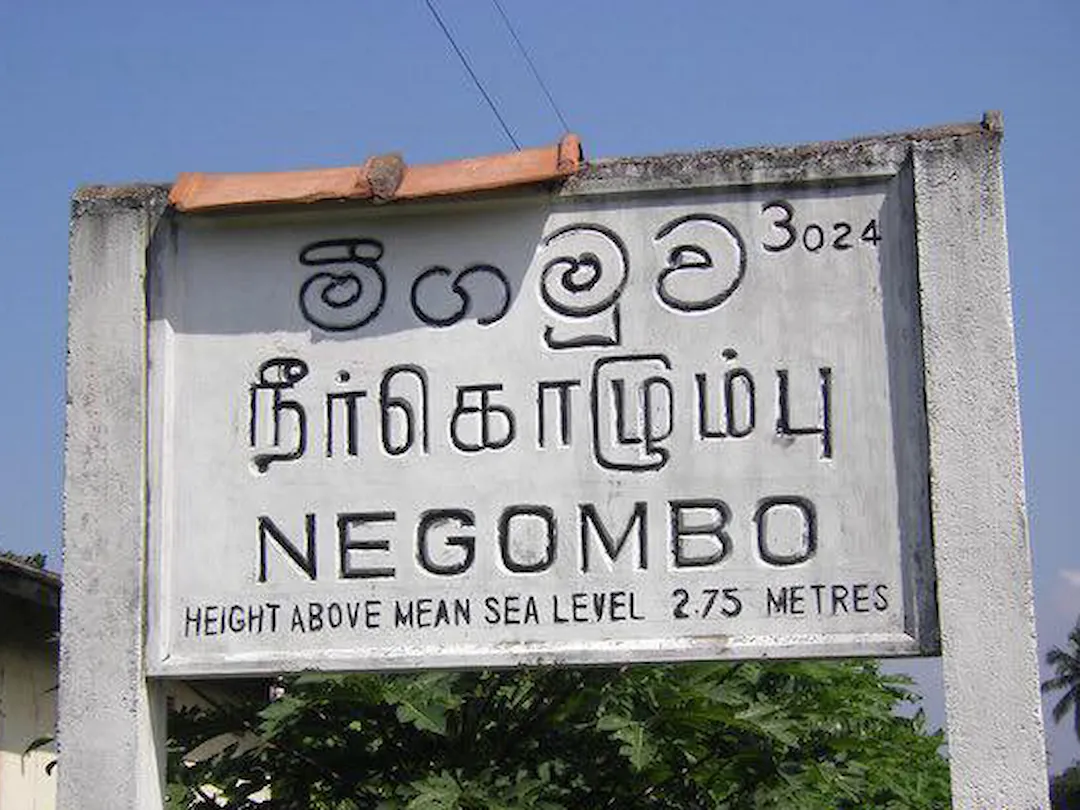
Negombo, a bustling city on Sri Lanka’s west coast, carries a fascinating blend of history, culture, and myths. Known for its picturesque beaches and centuries-old fishing industry, this city has become a key commercial hub while maintaining its laid-back coastal charm. Negombo is also a convenient gateway for travelers, just 38 kilometers away from Colombo and a stone’s throw from the Bandaranaike International Airport.
With a population of around 142,136, the city serves as the administrative center for the Negombo Division.
The city sits comfortably on the mouth of the Negombo Lagoon, surrounded by natural beauty, including expansive beaches. Being just 38 kilometers from Colombo via the Colombo-Katunayake Expressway makes it super accessible to anyone traveling to or from the capital. If you want to know more about traveling in Negombo, you should read our article, ‘Negombo Must-Visit Guide: Tips for First-Time Travelers.’
One of Negombo’s great strengths is its diversity and inclusiveness. Its inhabitants come from diverse ethnic and religious backgrounds and live together in harmony. Sinhala and Tamil-speaking communities are present, and Roman Catholicism is the dominant religion.
This unique mix of cultures has earned Negombo the nickname “Little Rome” because of the many beautiful churches and the deep-rooted Catholic faith within the local population.
Do you know how Negombo or Mīgamuva got its name? Well, there are a few stories. Let me tell you more about Negombo folklore.
The Folktale of the Beehive
The Legend of Bee-Gomu
Every town has its stories, and Negombo is no different. One of its most famous legends involves a beehive and a remarkable bee that, believe it or not, played a role in the birth of one of Sri Lanka’s greatest kings—King Dutugemunu.
According to the folktale, a bee of sixteen cubits was found in Negombo. This wasn’t just any ordinary bee. This massive insect was said to have satisfied the cravings of Queen Vihara Maha Devi, who was pregnant with Dutugemunu.
The bee’s honey was apparently just what the queen needed, and the story goes that this event gave the town its name, Bee-Gomu. Whether or not you believe it, this tale has become part of Negombo’s identity.
Mahavamsa and Thupavamsa Contradiction
While the beehive legend is charming, it doesn’t quite add up when you dig into the history books. According to the ancient chronicles Mahavamsa and Thupavamsa, Vihara Maha Devi’s beehive wasn’t found anywhere near Negombo.
In fact, these texts claim that the hive was located in the “Golu Muhuda” down south, hundreds of kilometers away. The queen was living in Magampura, so the idea that she’d travel all the way to Negombo for honey seems a little far-fetched. It’s one of those delightful contradictions in history—stories that get passed down and altered over time, mixing truth with myth.
Explorer Views and Historical Identity Of Negombo
Before the Portuguese rolled in, Negombo wasn’t much to write home about, at least according to early explorers. Arab, Dutch, and English explorers saw it as just a simple fishing village with not much going on. The Portuguese, however, decided to put Negombo on the map—quite literally.
They gave the town its current name, a corruption of the Tamil word Neerkolombu, meaning “village of honey.” Interestingly, none of these explorers believed that the town’s name had anything to do with King Dutugemunu or Queen Vihara Maha Devi.
Santiago Fernando’s Myth About Negombo
The story linking Vihara Maha Devi and Negombo, however, didn’t just appear out of thin air. Enter Santiago Fernando, also known as S. Guru Fernando, a local historian who came up with this entertaining myth.
He invented the tale about the queen’s beehive to connect Negombo to Sri Lanka’s broader historical narrative.
This wasn’t just a random idea; Fernando wanted Negombo to have a place in the grand story of the island’s history, even if it wasn’t entirely true. The myth even made its way into the city’s logo, adding a layer of fiction to the city’s identity.
Etymology and Folklore
While the beehive story may be fun, Negombo’s real historical identity lies elsewhere. The name Negombo is a Portuguese take on the Sinhala word Meegamuva, which translates to “village of honey.”
According to folklore, the name comes from a time when a swarm of bees settled in a boat that was then hauled ashore. Although the town never had a significant honey trade, this little bee story has stuck around, adding to its charm. What Negombo did have was an important spice trade, especially with cinnamon, making it a valuable spot for traders.
The Multiple Names of Negombo
Historical and Cultural Names
Negombo is a place with many names, each telling a different story. Locals often call it Meegamuwa or Mīgamuva, which directly translates to “mass of bees.” This name likely came from the swarm of bees that supposedly settled on a boat in the lagoon.
Then there’s Negombo or Meepuraya, a name tied to the myth of Prince Dutugemunu’s birth and the discovery of a beehive.
Some also refer to the city as Nigumbalaya, a name associated with King Maha Ravana, whose shrine was reportedly located in this area. And, of course, there’s Little Rome, a nod to the town’s strong Roman Catholic influence.
Finally, the name Meegama comes from the abundance of Mee trees in the region, known for producing excellent honey, at least according to ancient Ayurvedic texts. Whether you’re intrigued by its many names, fascinated by the bee legends, or interested in its role as a spice town, there’s no denying that Negombo is a city full of surprises.
